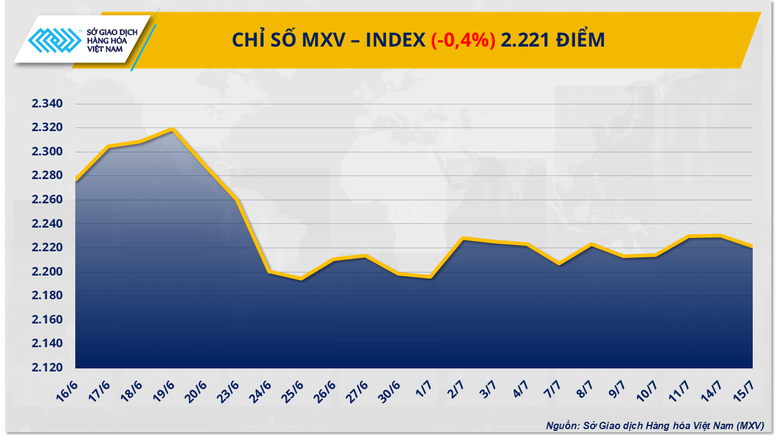
Supply pressure continues to weigh on coffee prices
Closing yesterday's trading session, the industrial raw material market witnessed overwhelming selling pressure on most key commodities in the group. In particular, the prices of two coffee commodities simultaneously weakened after the recovery session at the beginning of the week. Specifically, coffee prices recorded a decrease of nearly 1.5% to 6,555 USD/ton while Robusta coffee prices lost more than 3.1% to 3,408 USD/ton.
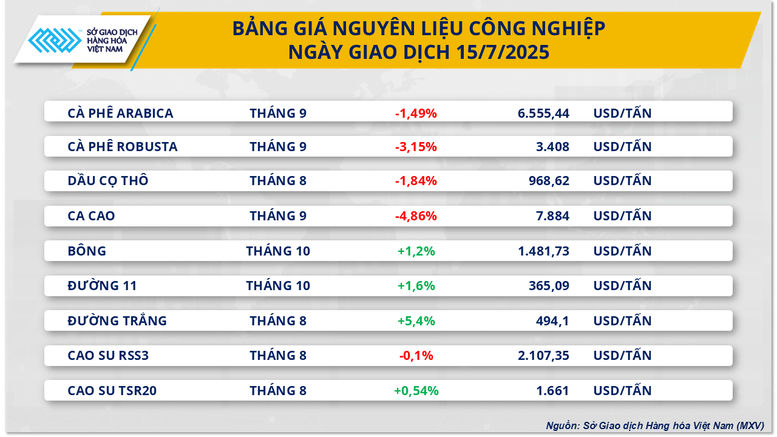
According to MXV, Brazil, Peru and Indonesia are entering the peak harvest period of the new crop in 2025–2026, which has led to abundant supply in the market and put pressure on prices. Meanwhile, the main harvest in Colombia, Central America, Mexico and Vietnam is expected to start seasonally in the fourth quarter of this year. According to initial estimates, the export volume of these countries could reach 28 million bags of Arabica coffee and 34 million bags of Robusta coffee.
Iron ore prices end 5 consecutive increasing sessions
Not out of the general market trend, the metal group in yesterday's trading session also continued to weaken in the context of the market continuously receiving negative information about the consumption situation. Notably, iron ore prices in yesterday's session ended a series of 5 consecutive increases, turning down by more than 0.6% to stop at 98.9 USD/ton.
The weakness of iron ore comes from data on production and consumption in China - the world's largest iron ore import market.
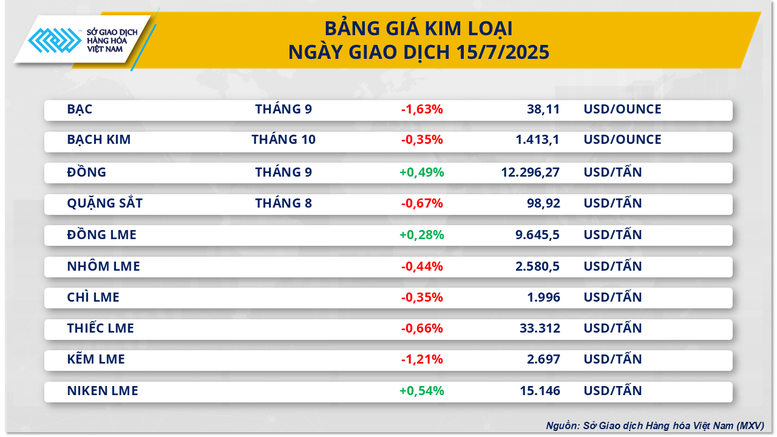
China's crude steel output fell to 83.18 million tonnes in June, down nearly 4% from May and more than 9% from a year earlier, according to data from the National Bureau of Statistics (NBS). Meanwhile, China's finished steel exports in June were 9.7 million tonnes, down 8.5% from May, according to the General Administration of Customs of China (GACC). The data suggests that production cuts are starting to take place as Beijing has previously planned, amid weakening demand for steel products in the international market.
In addition, data from GACC also showed that China's iron ore imports in June reached 105.9 million tonnes, the highest level since the beginning of the year. However, according to metals market analysis unit SMM, the sharp increase in iron ore imports was mainly due to mining companies such as BHP and Rio Tinto boosting deliveries to meet second-quarter targets. The organization also forecasts that iron ore imports in July will decrease as many mines enter maintenance periods.
In addition, despite Beijing’s efforts to revive the property market, China’s home price index in June continued its two-year decline, falling 3.2% year-on-year, reinforcing concerns that steel demand from the construction sector will be difficult to recover in the short term.
On the macro front, China's GDP in the second quarter of 2025 grew 5.2% year-on-year, down slightly from 5.4% in the first quarter but still exceeding experts' forecasts of 5.1%. In that context, experts say Beijing needs to launch a fiscal stimulus package worth 1.5 trillion yuan, equivalent to more than 200 billion USD, combined with interest rate cuts to offset the impact of Washington's tariffs, thereby boosting spending in the economy .
In the Vietnamese market, import and export activities in June recorded mixed developments. According to preliminary data from the Vietnam Customs Department, imports of iron and steel of all kinds in June decreased sharply by 9.6% compared to May, down to about 1.2 million tons. On the export side, the export volume of the above products reached more than 931,000 tons in June, up 4.3% compared to the previous month.
Source: https://baochinhphu.vn/mat-can-doi-cung-cau-gia-hang-hoa-nguyen-lieu-the-gioi-dong-loat-giam-10225071610501545.htm









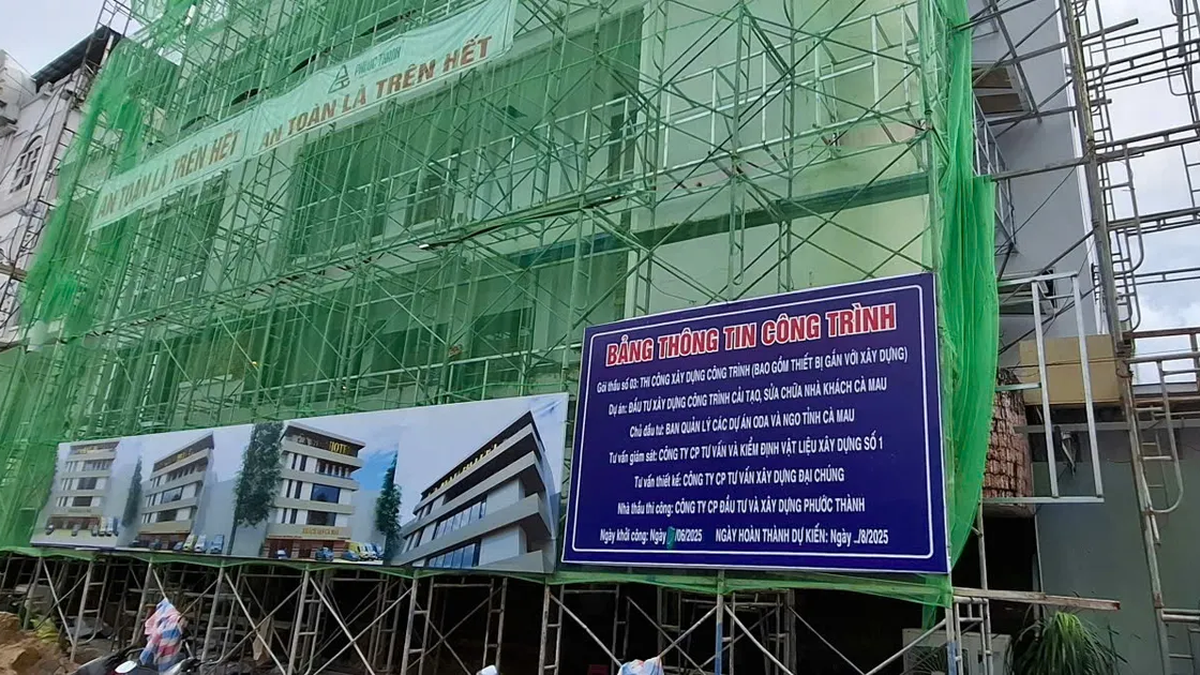
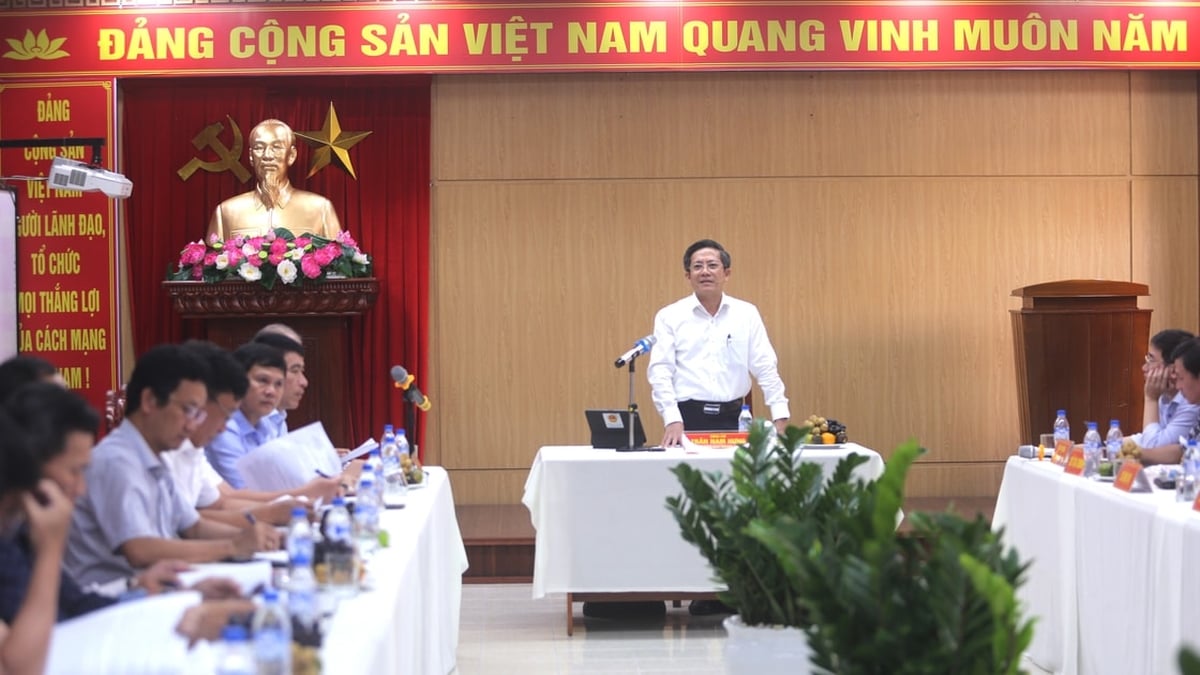









































![[Maritime News] More than 80% of global container shipping capacity is in the hands of MSC and major shipping alliances](https://vphoto.vietnam.vn/thumb/402x226/vietnam/resource/IMAGE/2025/7/16/6b4d586c984b4cbf8c5680352b9eaeb0)











































Comment (0)